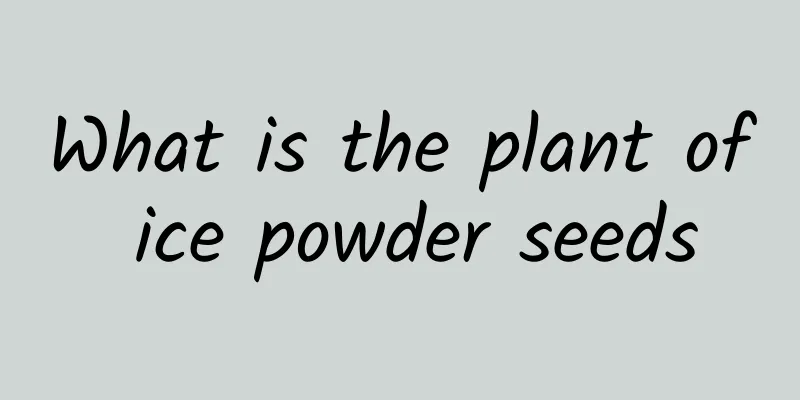Protect the pillar of the body - the cervical spine, and say goodbye to pain!

|
In modern society, more and more people are sedentary, and cervical spine problems are becoming increasingly serious. The cervical spine is the most vulnerable part of the 14 vertebrae in the human body. It is this part that provides stable support for the head and enables us to turn our head. However, due to long-term incorrect posture and living habits, cervical spine diseases are becoming more and more common. This article will provide you with basic knowledge about the cervical spine and provide some ways to protect the cervical spine. 1. Structure and function of the cervical spine The cervical spine is composed of seven vertebrae, connected to the skull at the top and to the thoracic spine at the bottom. It is not only a bridge between the head and the body, but also completes the rotation and forward and backward tilting of the head. The cervical vertebrae are connected by intervertebral discs and joints, forming a flexible structure that allows us to turn our heads freely. At the same time, the neck protects the spinal cord through the cervical canal and is a channel for the brain to transmit information to the body. 2. Common causes of cervical spine diseases ① Physiological changes in the cervical spine: With age, degenerative changes in the cervical spine can cause cervical disc diseases, such as disc herniation, cervical spinal stenosis, etc. These changes can lead to decreased stability of the cervical spine, making it more susceptible to external forces and causing pain. ② Abnormal neck posture: Maintaining an incorrect neck posture for a long time, such as looking down at a mobile phone, bending over for a long time to work, etc., will cause excessive stress on the cervical spine, causing cervical muscle fatigue and strain. In addition, long-term poor sitting posture is also a common cause of cervical spine diseases. ③ Neck trauma: When the neck is hit or twisted by external force, the ligaments, muscles and bone structures of the cervical spine are easily damaged, leading to cervical spine diseases. Common traumas include traffic accidents, sports injuries, falls, etc. ④ Excessive tension in the neck muscles: Long-term high-pressure working conditions or psychological stimulation can easily lead to excessive tension in the neck muscles, resulting in cervical muscle strain and abnormal cervical joint function. ⑤ Bad habits related to the cervical spine: Maintaining bad habits for a long time, such as staying up late, drinking alcohol, smoking, etc., will have a negative impact on the health of the cervical spine and increase the risk of cervical spine diseases. ⑥Other factors: Chronic diseases such as rheumatic diseases, blood diseases, metabolic diseases, etc. can also affect the health of the cervical spine and increase the risk of cervical spine diseases. 3. Symptoms and treatment of cervical pain Symptoms of cervical pain include neck pain, neck stiffness, headache, shoulder pain, etc. If the pain lasts for a long time, symptoms such as arm weakness and numbness of fingers may occur. Treatments for cervical pain include medication, physical therapy, and surgery. Commonly used medications include nonsteroidal anti-inflammatory drugs, analgesics, and muscle relaxants. Physical therapy can improve cervical pain and strengthen neck muscles through physical therapy, Chinese massage, and rehabilitation training. Surgical treatment is suitable for severe cervical diseases, such as cervical disc herniation compressing nerves and causing unrelieved pain. 4.How to prevent cervical spondylosis? ① Maintain a correct posture: Maintaining a correct posture for a long time, especially when working and studying, is an important way to prevent cervical spondylosis. When sitting, keep the natural curvature of the spine, and keep the head and neck upright without leaning forward or tilting too much. ② Moderate exercise: Moderate exercise can not only enhance the strength and flexibility of the neck muscles, but also improve the blood circulation in the neck. Common neck exercises include rotating the head, looking up and down, tilting left and right, etc. Performing moderate neck exercises can effectively prevent cervical spondylosis. ③Avoid maintaining the same posture for a long time: Maintaining the same posture for a long time will cause excessive tension in the neck muscles and easily lead to cervical spondylosis. If you need to stand or sit for a long time, you can take a proper rest, move your neck muscles, and relieve muscle tension. ④ Use your neck correctly: Using your neck correctly is also very important in daily life. Keep your neck in a natural position and do not use excessive force. Choose a suitable pillow when sleeping to reduce the pressure on your neck. When using electronic products such as mobile phones and tablets, keep your head up and do not lower your head for a long time. ⑤ Adjust the working environment: In the working environment, you should pay attention to adjusting the height and angle of the computer screen so that the neck and sight lines maintain a normal posture. At the same time, choose a comfortable chair and table to maintain a good posture for the whole body. ⑥ Maintain a normal weight: Being overweight may increase the load on the cervical spine and easily cause cervical spondylosis. Maintaining a normal weight helps reduce the burden on the cervical spine and reduce the risk of cervical spondylosis. ⑦ Regularly perform neck massage: Neck massage can relieve the tension of neck muscles, promote blood circulation, and is very effective in preventing cervical spondylosis. You can choose a suitable massager or seek help from a professional masseur. **Conclusion:** Cervical spine problems have become a common health problem for modern people, but as long as we pay attention to protecting the cervical spine and reasonably adjust our living habits, cervical spine pain will not be a problem for us. I hope this article can help you better understand the basic knowledge of the cervical spine and guide you to protect the cervical spine in daily life. Let us say goodbye to cervical spine pain and live a healthy life! Author: Tian Xiaobin Xingtang County People's Hospital |
>>: Dietary care for chronic glomerulonephritis
Recommend
What should I do if my leucorrhea turns yellow during pregnancy?
When a woman becomes pregnant, in addition to the...
How to deal with abdominal pain before delivery
In fact, pregnant women should pay special attent...
Can gestational hypertension last until full term?
Preeclampsia is a disease that worries pregnant w...
Early symptoms of pregnancy one week
The duration of pregnancy is generally calculated...
What is the cause of bleeding at 10 weeks of pregnancy?
Accidents are most likely to happen in the early ...
What can a thin woman eat to gain weight?
It is said that thinness is considered beautiful ...
Why do girls have hair on their chests?
The breast is a particularly important part of th...
Postpartum Qi and blood deficiency conditioning diet therapy is the first choice
Women will lose a lot of blood during the deliver...
What should I do if my menstrual blood clots
I believe everyone knows the importance of menstr...
How many types of abortion are there for women?
Nowadays, many female friends have had abortions,...
How long does it take to produce milk after cesarean section
Because each mother's physical condition is d...
Kenshoo: Mobile ad revenue now accounts for a large portion of Facebook's global ad revenue
Facebook charges more for mobile ad clicks From b...
Why are my labia majora swollen and painful?
Vulva swelling and pain are quite common in life....
When the heart rate changes suddenly, we should be alert to malignant arrhythmia. How should we treat it?
An elderly friend left a message to Huazi, saying...









